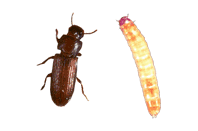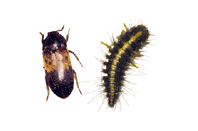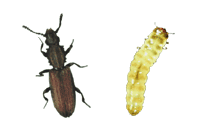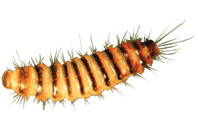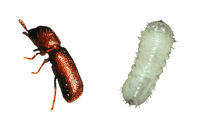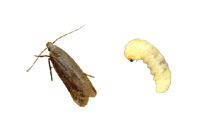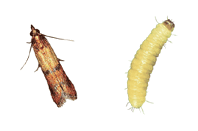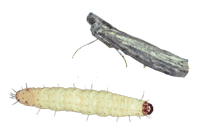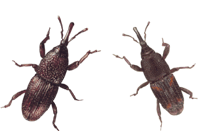Rid your home of unwanted pests with guaranteed service from Eagle Pest Control.
Eagle’s pest control maintenance service is designed to keep you home pest-free by creating a protective barrier around the exterior of your home. We use extremely effective, long-lasting products that are safe to use in homes, schools, day cares, and food service establishments. Our full-service maintenance plans are inclusive of all general household pests. You will have a pest-free environment, both inside and outside of your home or business – Guaranteed.For Service calls and pricing, please call 502-243-1600
Pantry Pests
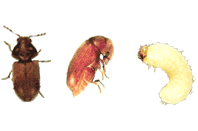
Cigarette and Drugstore Beetles
Cigarette and drugstore beetles are similar in habits and appearance, and sometimes confused with each other. The cigarette beetle is named for being a pest of stored tobaccos of all forms. The drugstore beetle is probably named for infesting various herbs used for medicinal purposes in the past. Both beetles are around 1/10" long, though the drugstore beetle is slightly skinnier in proportion to its length.
These beetles have a hunchback, which is apparent from the side - making their heads hard to see from the top. Coloration for both beetles is brown. However, the cigarette beetle is lighter brown, and the drugstore beetle can have some reddish brown color. To distinguish the two species, usually takes a magnifying glass.
Up close you can see the drugstore beetle has little punctures on its back that are arranged in rows. The beetle larvae for both species are practically indistinguishable from each other. They are around the same length as the adults, white colored with a darker head, and curled into a "C" shape. The adults and larvae are both able to chew through various types of packaging to get to stored products, spreading the infestation.
Things they will eat include flour, grains, dried foods, spices, dried flowers, dog food, dried meats and leathers, paste from books, and even pyrethrum pesticide. The drug store beetle has a more varied appetite than the cigarette beetle, but they can both be found in the same items. Adult beetles can fly, and are attracted to lights at night. Their presence around lights can be an early warning sign of infestation.

